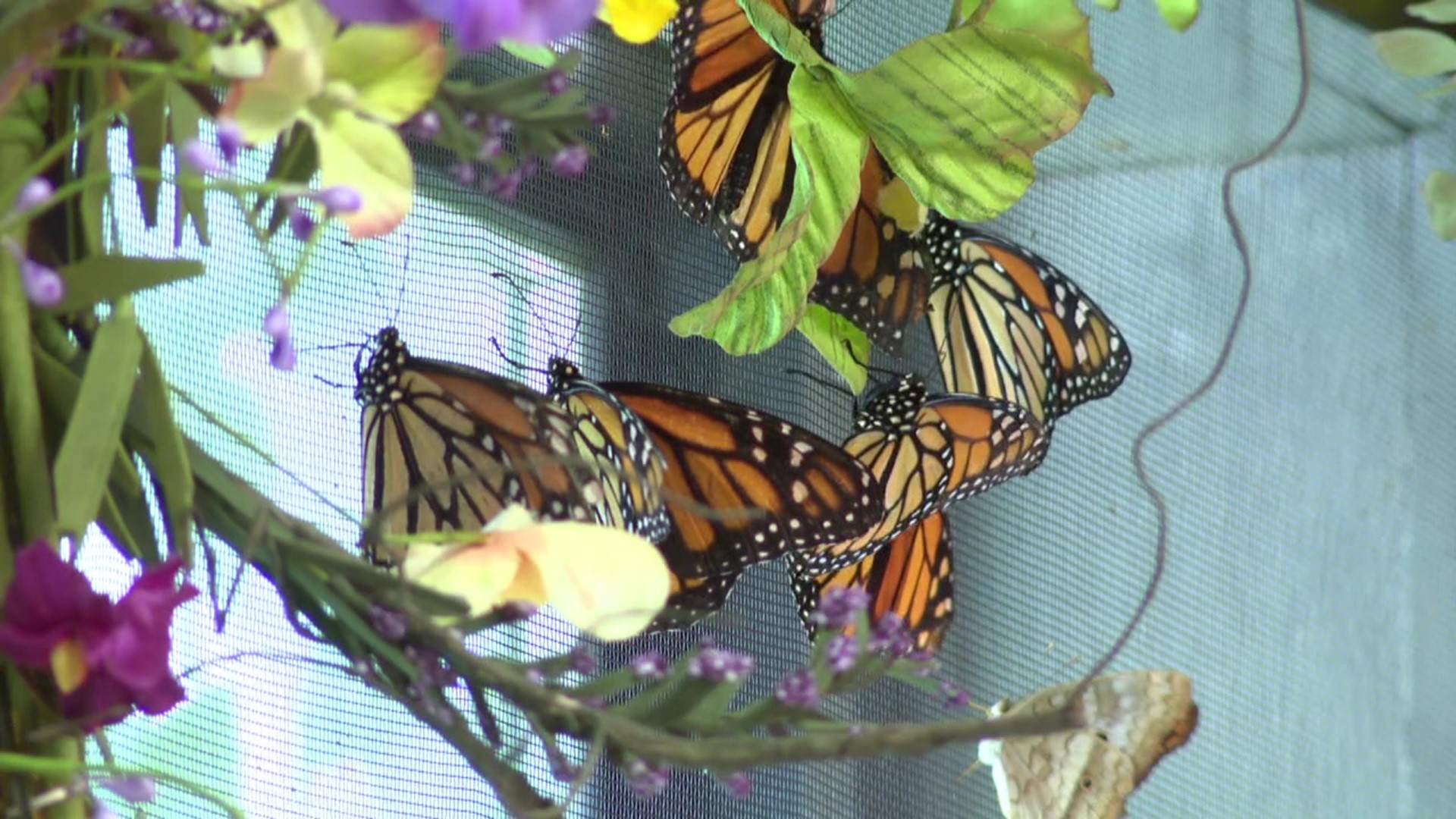JIM THORPE, Pa. — Bear Mountain Butterfly Sanctuary near Jim Thorpe is home to more than 100 butterflies. Their most popular is the monarch.
Known for its orange-red wings and black veins, what was once a familiar sight, is now headed toward extinction.
"Monarchs are symbolic in that it's the only insect that does a two-way migration, and if we lost the numbers of the monarch, we'll lose the migration as a phenomenon, and that's what's concerning the scientist," said Michele Franks, a docent at Bear Mountain Butterfly Sanctuary.
The International Union for Conservation of Nature declared the migratory monarch butterfly endangered. That means the species is now considered to have a very high risk of extinction in the wild.
Michele Franks works at the butterfly Sanctuary in Penn Forest Township. She said there are many contributing factors to the decline in monarch numbers.
"Climate change and lack of habitat," Franks said. "Milkweed is being eradicated everywhere, and it's because of the loss of habitat they're mowing everything down. Also, because of pesticides and GMOs and without the milkweed, that's the only plant the Monarchs will lay their eggs on."
Franks said butterflies and caterpillars are an important food source for many animals, even helping farmers grow crops.
"They're excellent pollinators. Without pollinators, there's like three grains that we would be eating, so pollinator is extremely important, and butterflies are a big contributor to that," Franks said.
While the monarch isn't on the federal endangered species list right now, experts say they very well could be, and they're offering some tips to help keep them around.
"Plant milkweed. Don't use pesticides in your gardens, and you need less grass and more flowers," Franks said.
Every year the Bear Mountain Butterfly Sanctuary raises thousands of monarch butterflies. Your last chance to see them this year is August 28.
See news happening? Text our Newstip Hotline.

